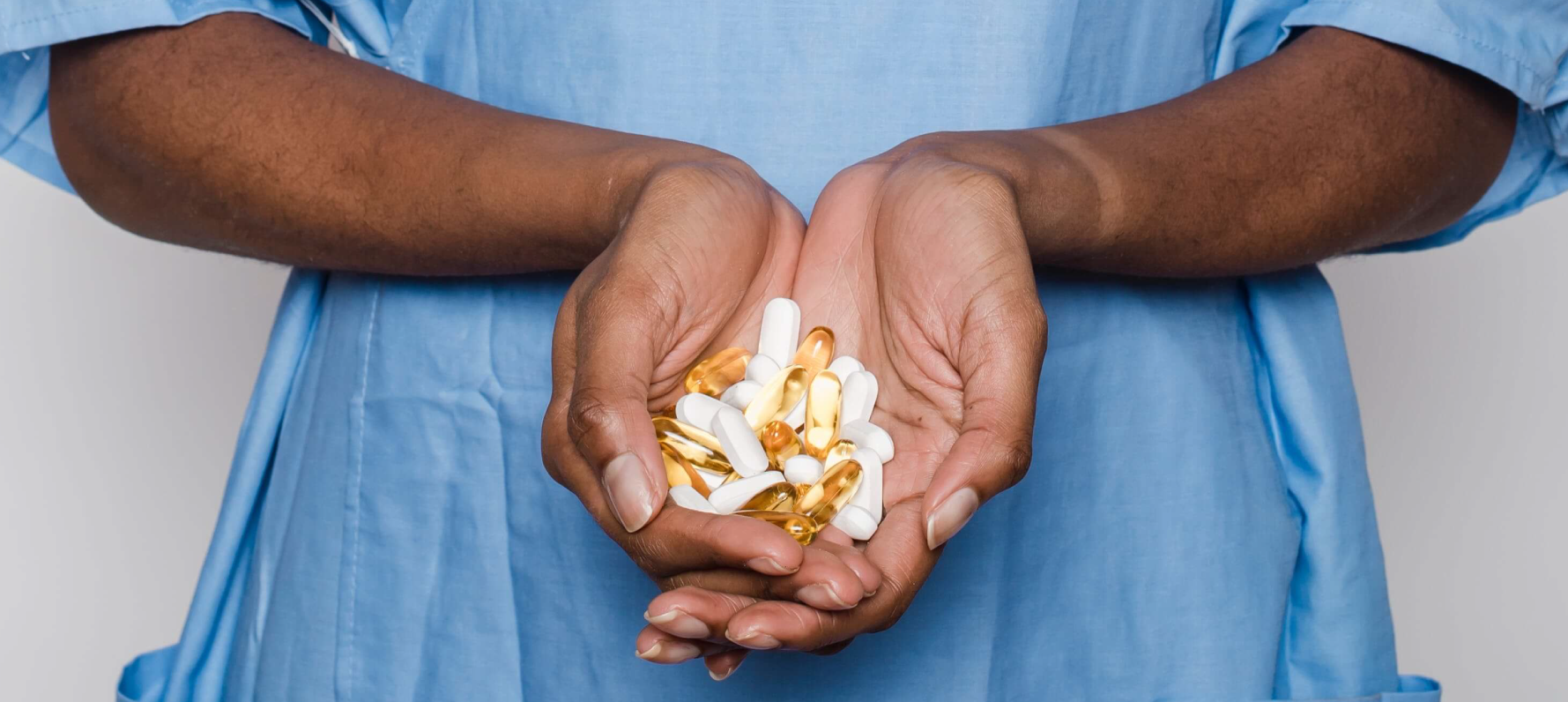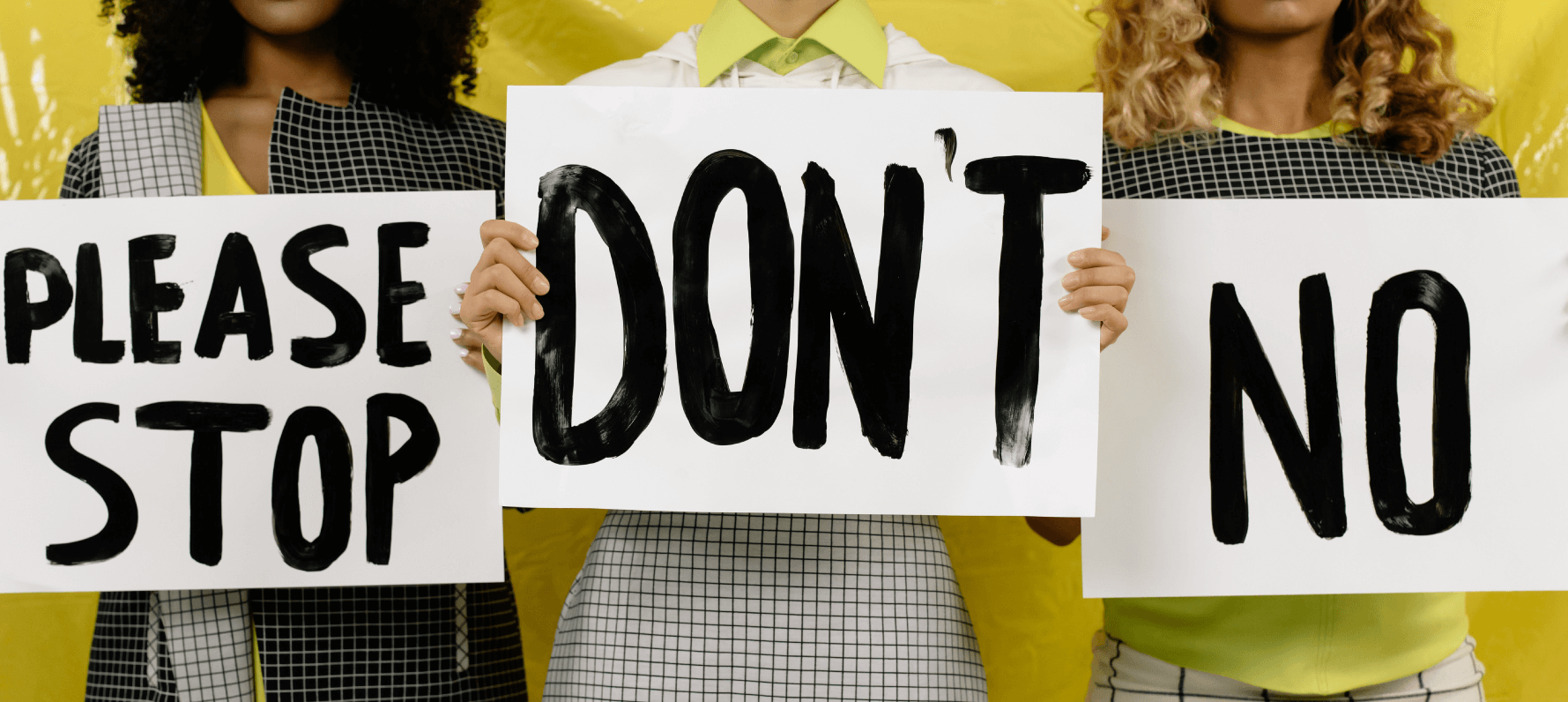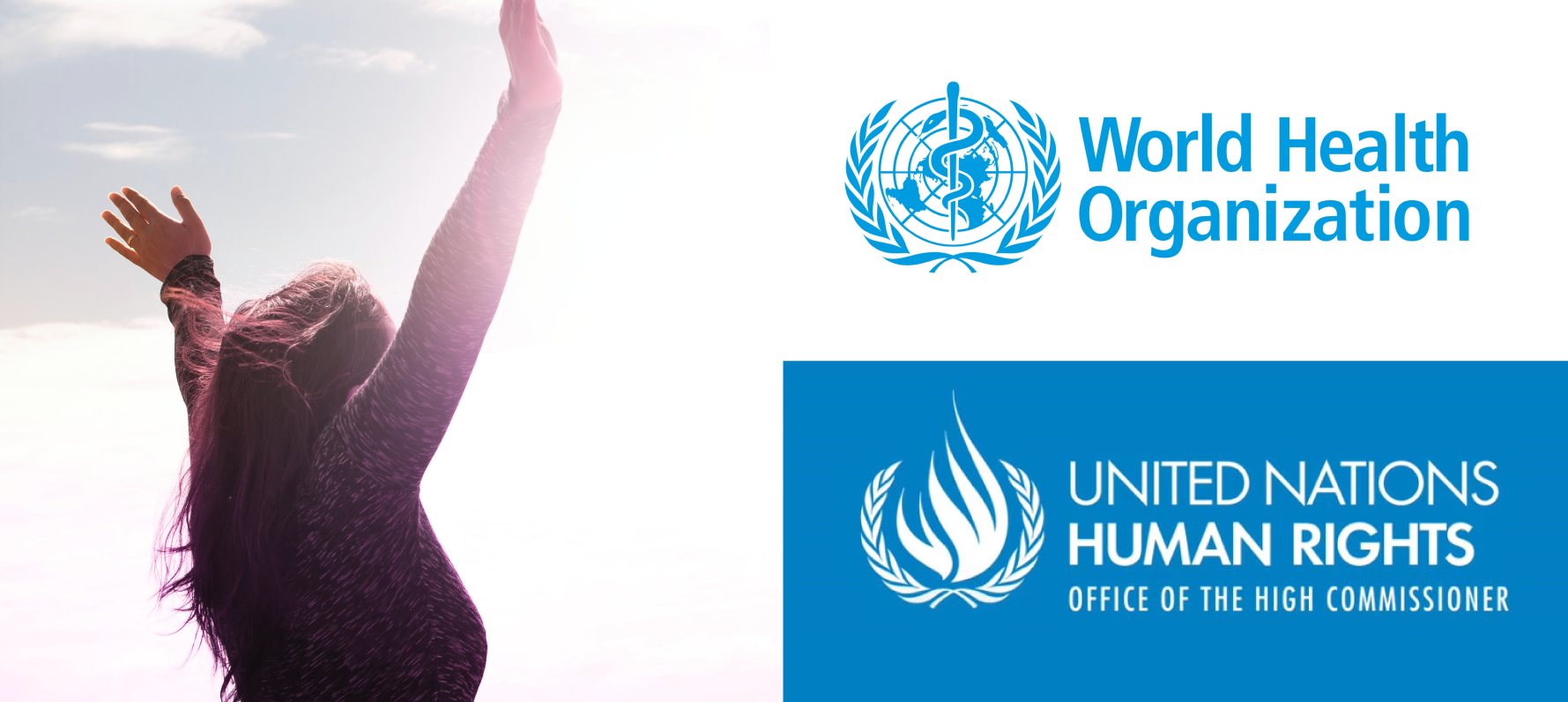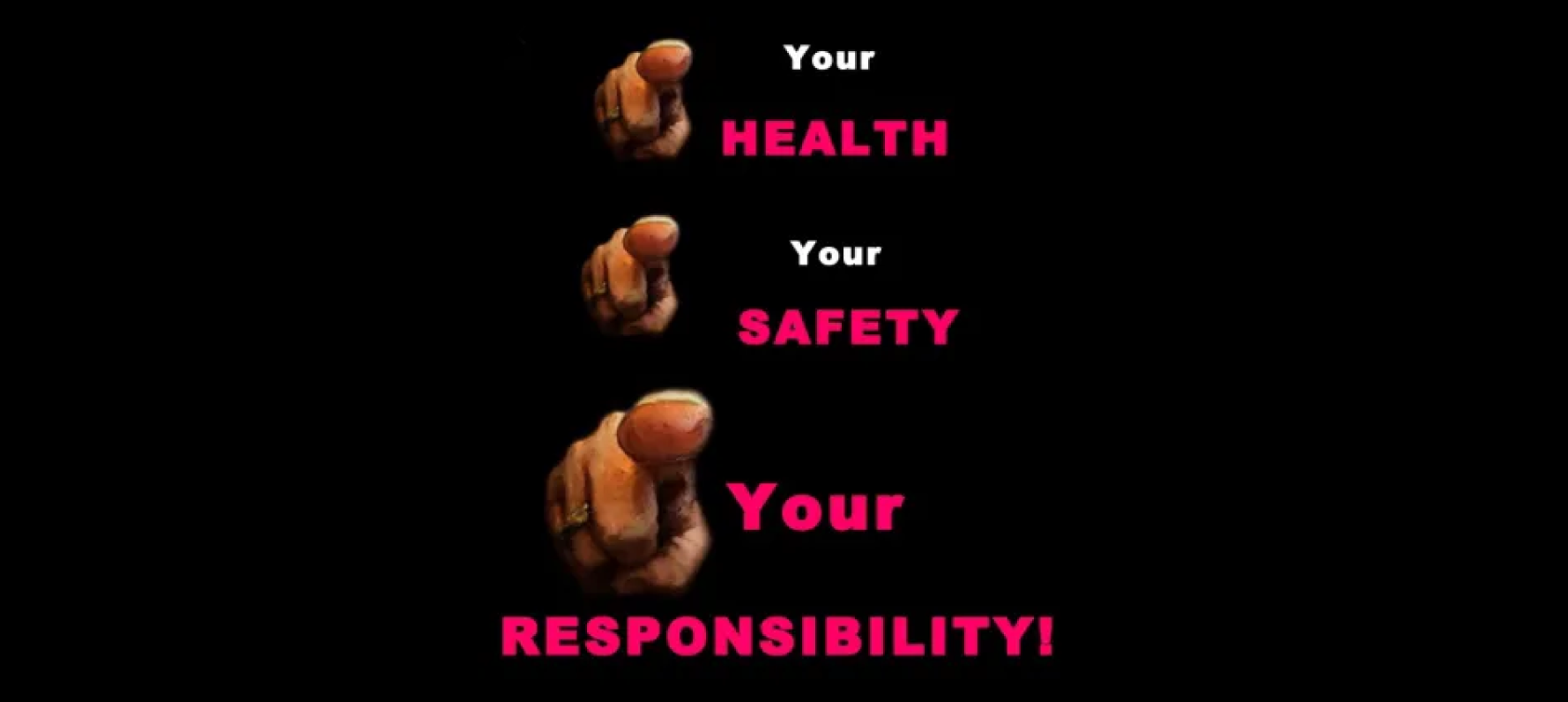Work with women and girls? It’s time to reject psychiatry
Is it that time again? Time to shake the field up again? Seems so.
Diagnosing women and girls with personality disorders after they have been abused, traumatised, trafficked, raped, neglected or harmed – is disgraceful practice. It needs to end. We all need to lobby, campaign, influence and convince decision makers and leaders to reject personality disorders as quack science.
Yet, when I say this to social workers, nurses, family support workers, police officers and teachers – they look at me like I’ve grown two heads.
It’s the look of, ‘But, diagnosing them helps them, doesn’t it? We can get them the help they need if we can just get them the diagnosis. Right?’
You see, many professionals I teach or work with, have never even considered the trauma-informed approach to working with women and girls who have been traumatised. They have been taught traditionally, medically and oppressively. They don’t subscribe to the medical model because they have chosen it as their ideological approach – they subscribe to it because they had no idea there was an alternative.
To their credit, many of them listen intently as I explain the origins of psychiatry, the theories and models, the lack of evidence and the abuse of psychiatric diagnoses that has oppressed classes and groups for decades. Similarly, many of them realise that their practice has been misinformed or misled. Some of them have a feeling of confirmation when they attend my training – a feeling that they had never truly subscribed to the medical model of working with women and girls subjected to abuse, but they didn’t know the language, the theories or the evidence to back themselves up. They didn’t know how to fight against it.
As the years have passed, I have incorporated more and more trauma-informed, anti-psychiatry approaches into my work, training, research and speeches. The impact has been incredible. So many professionals are now able to see that diagnosing girls and women with personality disorders and psychosis after they have been abused is not only harmful, but will impact them for the rest of their lives.
And as I have said, this is not completely down to me – because so many frontline practitioners already felt very uncomfortable with our practice, anyway.
However, because so much mental health and abuse training is medical-model-dominant, they have never been taught an alternative explanation.
We need to provide alternative narratives to practitioners and we need to do it now.
My top 4 messages for frontline practitioners working with women and girls
1) Learn the oppressive history of psychiatry
The medical model of mental health is so dominant that it is communicated as ‘the’ explanation of emotional and mental life. Many of us have been taught that mental health issues are genetic, neuropsychological/ physiological, developmental or a combination of all. We are taught that medications can ‘balance people out’ or ‘help them prepare for therapy’. We are taught that some people need to be locked up and sedated for their own safety.
As of September 2019, 7.3 million British adults (1 in 6 adults) are taking antidepressants and a further 3.9 million British adults are taking anxiety medications such as benzodiazepines, Z drugs and gabapentinoids.
But this monopoly on our mental life didn’t happen overnight. Long before we started talking about ‘mental health’, we punished, killed, sacrificed, outcast and abused people who did not conform to our social norms of behaviour or character. Many feminists and historians now suggest that the death of up to 100,000 women who were murdered for being ‘witches’ between 1450 and 1750 were often women who were non-conforming, disabled, ill, intelligent, opinionated or had been abused and traumatised.
In the European Middle Ages, mental health started to become mixed with religion. When someone was not conforming or was traumatised, it was proposed that they were possessed by demons or satan. Most ‘treatments’ for mental health included religious ceremonies, exorcisms, torture or death of the person. In some cases, it was argued that the only way a demon could be stopped, would be to kill the ‘host’ person.
As time passed, mental health was proposed to be caused by imbalances of fluids in the body and brain. Excess bodily fluids such as bile, blood or choler were said to cause ‘hysteria’, ‘melancholia’ or ‘mania’. However, the religious approach to mental health continued for a long time. Quakers set up many asylums and developed religious conversion treatments to ‘cure’ mental health issues.
Lieberman (2015) puts it well, ‘The mentally ill were considered social deviants or moral misfits suffering divine punishment for some inexcusable transgression.’
Asylums multiplied across America and Europe during the 1700s and 1800s, and professionals from all different backgrounds became interested in working with the ‘mentally ill’. Asylums became sites of experimental research, surgery, treatment, torture and death of patients – on which the ‘science’ of psychiatry was built.
Psychiatric experiments, tortures and surgeries included everything from holding patients under freezing cold water until they ‘calmed down’ (read: passed out or drowned) to deliberately ‘releasing humors’ from the patient by bleeding them, blistering them, starving them or purging them. In 1927, Wagner-Jauregg won the Nobel Prize for ‘proving’ you could treat schizophrenia by injecting malaria-infected blood into people with the diagnosis.
By 1941, insulin shock therapy was rife. In this ‘treatment’ for ‘mental illness’, people were injected with extremely high doses of insulin to cause seizures and coma, claiming that when they came around, they would be cured of madness.
By the 1940s, electroconvulsive shock therapy (ECT) and frontal lobotomies were common. Whilst frontal lobotomies stopped being used by the 1980s (although this did mean that over 100,000 people were subjected to them), ECT is still used today. In fact, it is making something of a comeback – and now being used to ‘treat’ autism in some clinics in North America.
I have personally worked with children who have been subjected to ECT in the Midlands in the UK, after they were abused and raped. One girl I worked with in 2013 was completely wiped out by ECT sessions on the NHS, so much so that she used to come to my sessions and fall fast asleep on the sofa for hours, and then wake up confused and upset. She was being given ECT sessions for ‘depression’ because she had been sexually abused.
By 1955, psychiatric medications were a fairly common way of ‘treating’ madness. But it wasn’t for many more decades that we stopped using language like ‘hysteria’, ‘madness’, ‘retardation’ and ‘mental illness’. However, despite this seemingly positive shift in language, we are still using some of the same treatments, misconceptions and oppressive practices we have used throughout history. We have moved towards the term ‘mental health’ which we now equate with ‘physical health’ – but we still use oppressive, dangerous and abusive practices to ‘treat’ the natural, normal distress of traumatised people.
The language got nicer but the practice, well, it didn’t really evolve.
Throughout these years, the groups most significantly affected were Black people. Psychiatry is notoriously white, elitist and racist. Always has been. Still is. Racism was embedded into theory, practice and research. Psychiatrists believed that Black people had smaller brains than white people, were ‘naturally’ better at hard labour and slavery, were less psychologically developed and were more aggressive, emotionally unstable and violent. These beliefs still have an enormous impact on mental health practice, in which people still believe that Black people are more likely to have ‘mental health issues’, more likely to have ‘schizophrenia’ and are more likely to be violent or commit crime.
My questions to practitioners are:
Did you know all of this? Did you know that our modern psychiatric system is built on all this suffering, death, murder, oppression, racism, abuse and torture?
Have you really researched the history of the treatments and medications your clients are being prescribed?
Do you really understand and believe the labels your clients are being given?
2) Borderline personality disorder (or EUPD) is misogynistic twaddle
Along with the racism and classism in the psychiatric systems, there is the harrowing misogyny. In 2019, women and girls are 7 times more likely to be diagnosed with BPD or EUPD than boys and men showing the same symptoms. Again, the origins of this oppression hark back to hundreds of years ago.
From the 18th century, ‘hysteria’ was classed as a women’s disease, linked to femininity and the female form. ‘Hysteria is the woman’s natural state’ (Laycock, 1840) and ‘A hysterical girl is a vampire who sucks the blood of the healthy people around her’ (Mitchell, 1885: 266).
Much of the BPD or EUPD diagnosis is based on gender role stereotypes and sexism. Women and girls are ideally polite, nice, happy, content, quiet, have no opinions or ambitions and live to serve others. ‘Difficult women’ are frequently diagnosed with borderline personality disorder (Ussher, 2013). The typical borderline patient has been described as a ‘demanding, angry, aggressive woman’, who is labelled as ‘mentally disordered’ (Jimenez, 1997: 162, 163) for behaving in a way that is perfectly acceptable in a man. Research found that men’s sadness and anger was considered to be related to situational factors – such as ‘having a bad day’ – whereas sad or angry women were judged as ‘too emotional’ (Barrett and Bliss-Moreau, 2009).
Indeed, I always make the point of telling frontline practitioners that the diagnostic criteria from DSM II for ‘hysteria’ and the diagnostic criteria from DSM V for ‘borderline personality disorder’ are very similar. Hysteria has been described as the ‘wastebasket of mental health’ and BPD has been described as a ‘catch-all diagnosis’.
They are essentially the same diagnosis. They are both targeting women and girls. They are both built around gender role stereotypes. They both oppress traumatised and abused women. Where hysteria (or ‘wandering womb syndrome’) was said to be caused by women’s hormones and biology – BPD is said to be a disordered personality. Both innate, internal causes which need to be medicated, treated and dealt with.
The ‘symptoms’ or ‘diagnostic criteria’ of BPD are:
- Fear of abandonment
- Unstable or short relationships
- Unclear or shifting/changing self-image
- Impulsive, self-destructive behaviours
- Self-harm
- Mood swings lasting minutes or hours
- Feelings of emptiness
- Intense anger
- Feeling suspicious, paranoid or disassociating
Most people would agree with me when I say the following three things:
- Anyone who is traumatised by abuse or exploitation would hit enough of these criteria to be diagnosed with a personality disorder
- Most people at pretty much any point of major stress, would exhibit these behaviours as a normal response to distress and change
- These feelings are completely justified in traumatised and abused people – and therefore do not constitute a disorder or abnormality. These responses are normal.
We need to think much more critically about how many of the girls and women on our caseloads are being told that their responses are abnormal and are caused by personality disorders, rather than caused by the people who abused, oppressed, scared and harmed them. Why would we want to collude with the victim blaming and encouragement of self-blame of women and girls like this?
My questions for frontline practitioners working with women and girls are:
Did you know that BPD and EUPD were so closely related to hysteria and women’s ‘madness’?
Have you not ever wondered why so many of the teenage girls and young women you work with are being diagnosed with personality disorders after traumatic life experiences?
Have you ever considered how a woman or girl is ever supposed to move forward if she has been told that her personality is disordered?
3) Psychiatric diagnosis will stay on her file for a long time
Many of our systems in the UK require a psychiatric diagnosis in order to get a service for the woman or girl we are working with. This means that girls might be diagnosed with a mental health issue before they are allowed access to a mental health service or counselling service. It may mean that a woman has to be diagnosed with a disorder before she is allowed to be referred to a service that can help her.
Psychiatric diagnosis has become the gatekeeper of therapeutic services. So much so, that even counsellors and psychotherapists are colluding with the psychiatric diagnosis of their own clients. Many practitioners are told that the best thing you can do for the girl is to get her the diagnoses she ‘needs’ so they can access funding, support or services.
This is very short-sighted.
One of the things that many practitioners are not warned about, is how long those psychiatric diagnoses will impact the girl (soon to be an adult woman in a completely different set of services). When teenage girls who have been sexually exploited, raped or abused get two or three psychiatric diagnoses, are medicated with antidepressants or mood stabilisers and are then kept on those drugs or treatments for the rest of their childhoods – what do you think is going to happen to them when they reach adulthood?
They will be miraculously cured, have their diagnoses removed and live a healthy, normal life?
For most of those girls, their diagnoses will impact them for a long time. They may be refused access to services, refused access to education, housing, occupations, college courses and volunteering opportunities. They may be told they are ‘too unstable’ to be involved in projects or to start therapies. They may even be flagged as having personality disorders to their local police force, ambulance crews, fire service and GP surgeries.
Many professionals I teach are unaware that the psychiatric diagnosis can be passed to emergency services who then use that information out of context to label the woman or girl as ‘high risk’. This may mean that ambulance crews are told they have mental health issues before they attend an address. It may even mean that they call for the police to support them. Further, it may mean that a GP is less likely to believe their symptoms or illnesses because they have been flagged as having a personality disorder.
These issues are serious and long-term. I have personally worked with and met many women and girls affected by this discrimination.
My questions for frontline practitioners are:
Did you know this happened to women and girls?
Would you still encourage them to get psychiatric diagnoses, if you knew this would define them for the years to come?
Wouldn’t it be better to support the girl/woman with the trauma and to talk to them about what it means rather than encouraging them to get a psychiatric label?
4) Do everything you can to reject deficit models of working
The final thing I always teach practitioners to do, is to reject the deficit model of working with women and girls – or any humans to be honest. The deficit model, like the psychiatric model, is dominant in all our practice with children and adults. We have been taught that the pasts of girls can predict the futures of women. Professionals are taught to assess the past of the girls to enable them to predict their future – whether they will be abused again, whether they are at risk of CSE, whether they will be criminally exploited, whether they will end up ill, in prison, self-harm or suicidal.
Whilst it might be tempting to have some sort of algorithm that could predict the outcomes of women and girls, I prefer to teach practitioners that women and girls can overcome and work through everything and anything (with the right humanistic support). I prefer to teach them to work from a strengths-based model; to see all women and girls as whole humans with an entire future ahead of them. A future that is not defined by what someone else put them through.
Instead of seeing women and girls as traumatised, doomed or broken – I want practitioners to acknowledge their trauma, work in a trauma-informed way, but to see them as capable, intelligent, powerful humans with potential, skills, coping mechanisms and many values to give to the world.
Moving away from a deficit model means not only rejecting the diagnosis of women and girls as mad, mentally ill or hysterical – but rejecting the way we try to quantify, categorise and predict the future of oppressed and abused women and girls.
My question to practitioners:
Wouldn’t you rather see women and girls as potential lawyers, activists, musicians, scientists, teachers and artists than believing the deficit model that these women and girls will amount to nothing?
Around half of our own workforce were abused in childhood (Eaton and Holmes, 2017). If the deficit model was correct, how did we all get into these jobs? Wouldn’t most of us be completely ineffective?
If we believe the deficit model to be correct, why do any of us bother doing our jobs at all? Aren’t we all in this line of work because we believe that every human has the capacity to process their trauma and go on to live a fulfilling life after abuse?
Reject psychiatry for the good of the women and girls you work with
For these reasons and so many more that I teach and write about, we must reject the psychiatric diagnosis of women and girls subjected to traumas. In fact, reject all psychiatric diagnosis. The evidence base for psychiatry is shameful, elitist, oppressive and dodgy as fuck. How this profession has continued to tout itself as a real science is beyond me. How millions of people are prescribed more and more drugs for human distress whilst we leave them in abuse, poverty, oppression and trauma disgusts me.
We can change practice and theory. We can refuse to diagnose women and girls with psychiatric conditions. We can challenge the concepts of personality disorders used to oppress and label women and girls who have been abused. We can stop referring people subjected to abuse into medical model services that will tell her she is mad and needs treatment. We can stop supporting deficit models of working in which we use numbers, calculations or assessments to predict the outcomes of women and girls who have been abused.
We can commit to research, read about and learn about the way psychiatry oppresses populations of people. We can learn about new models of trauma and mental health support such as the PTMF (Power, Threat, Meaning Framework).
I will leave you with this thought:
As the outspoken, difficult woman of the 16th century was castigated as a witch, and the same woman in the 19th century a hysteric, in the late 20th and 21st century, she is described as ‘borderline’ or as having premenstrual dysphoria disorder. – Ussher, 2013
In conclusion: Same shit, different era.
About the author: Dr Jessica Taylor
Dr Jessica Taylor (PhD, FRSA) is a Chartered Psychologist specialising in the victim blaming of women subjected to male violence and the pathologisation of women's mental health. She is the Director of VictimFocus, an international consultancy and research organisation dedicated to changing systemic victim blaming and misogyny in government, policing, law, medicine and social care services. She is the Sunday Times Best Selling Author of 'Sexy But Psycho: How the Patriarchy Uses Women's Trauma Against Them' and 'Why Women are Blamed For Everything.
Get more trauma-informed content!










